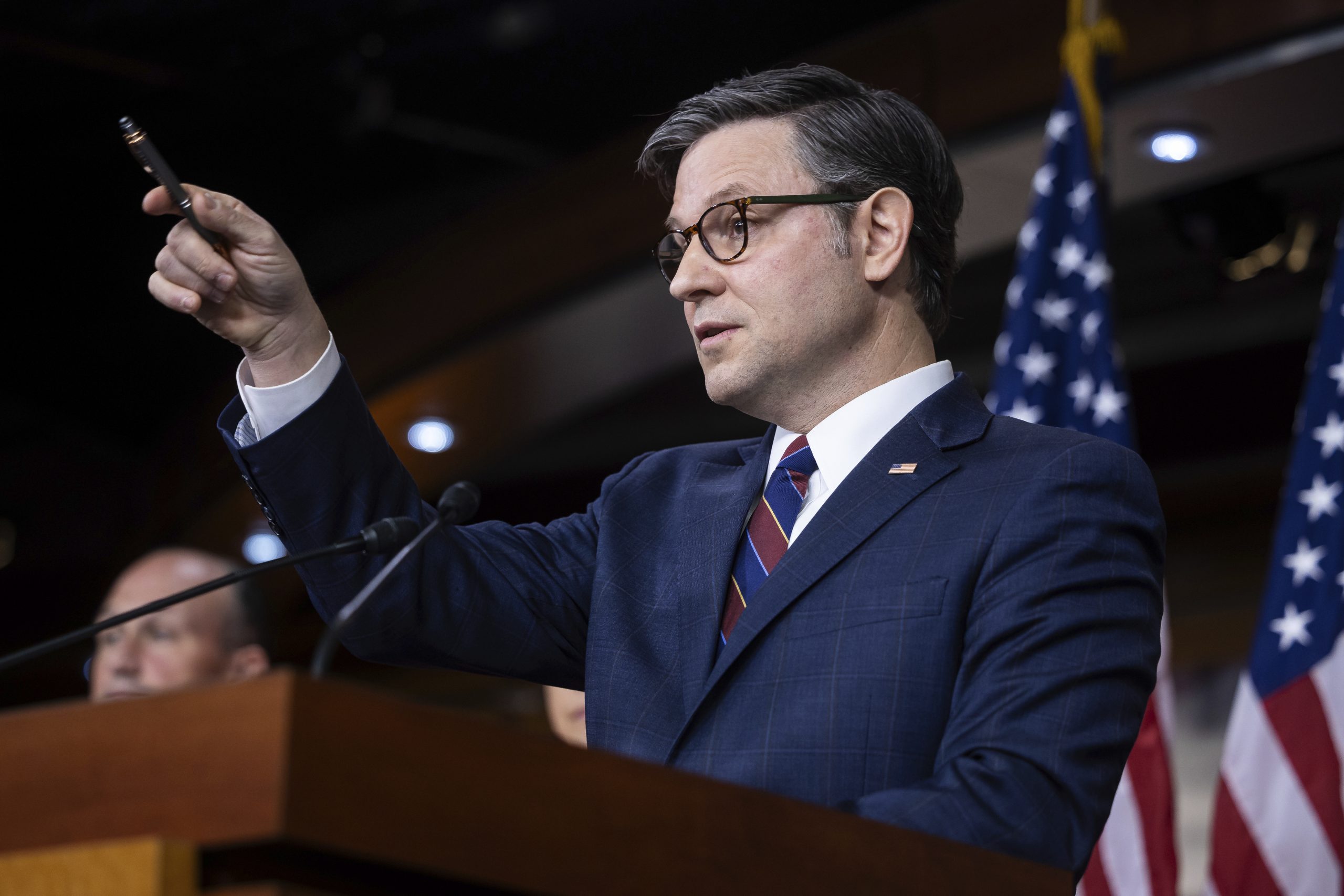Defense Secretary Lloyd Austin is saying all the right things to make China hawks happy. He told lawmakers that countering Beijing is a top priority. He tapped a well-respected Asia expert to give him advice. He even started up a task force to look at how the department can do a better job dealing with China.
But the Pentagon’s pivot away from the Middle East and toward China, something the two previous administrations tried to do with varying degrees of success, will soon face its first major test: the massive budget request the department is set to submit to Congress this spring.
Despite the pledges to commit to Asia, the challenge of extricating the U.S. from the Middle East was on display yet again on Wednesday, when at least ten rockets targeted an air base in western Iraq that hosts about 2,000 U.S. troops.
But while it looks like the United States won’t be leaving the Middle East anytime soon, top military officials are looking to hold Austin to his word on shifting resources to the Pacific. Adm. Phil Davidson, commander of U.S. Indo-Pacific Command, threw down the first marker this week, flying from his headquarters in Hawaii to Washington to brief top Pentagon officials on his plans to ask Congress for nearly $5 billion next year to help counter’s China’s buildup in the region, including money for new missile defense systems. Davidson is required by law to submit a wish list, and this year’s number is double the amount that was appropriated last year.
“The greatest danger we face in the Indo-Pacific region is the erosion of conventional deterrence vis-à-vis China. Without a valid and convincing conventional deterrent, China will be emboldened,” Davidson said during an appearance at a conference in Washington on Monday. “We must convince Beijing that the costs to achieve its objectives by military force are simply too high.”
Davidson’s briefings received “positive feedback” from top Pentagon leaders, according to a defense official. In addition to briefing Austin and Deputy Defense Secretary Kathleen Hicks, Davidson met with other top officials and the new China task force, the person said.
Congress will ultimately determine the funding for the Pentagon’s Asia buildup. Lawmakers, who have been calling for a beefed up military presence in the region to deter China, like what they see so far.
Yet at least one top lawmaker is wary of a wholesale buildup in the region.
House Armed Services Chair Adam Smith (D-Wash.), who cosponsored the new Pacific Deterrence Initiative that’s aimed at deterring China, said he’s not yet sure whether Davidson’s request is the right answer to the problem, or how it will be reflected in his panel’s annual defense policy bill. Smith, who has been skeptical of major defense spending increases and plans to expand the military, said he’s concerned the U.S. is pursuing a strategy that aims " to build a military that is large enough to dominate" China.
"What I want us to be focused on is deterrence. How can we have sufficient capability to deter China from invading Taiwan, from pushing the territorial boundaries with their neighbors, from blocking sea lanes in order to sort of bully their way into greater global power?" Smith said in an interview Wednesday. "So I will take a look at Adm. Davidson’s request, but it’s through that lens. Not domination. Deterrence."
"How you spend the money is a lot more important than the amount you have," Smith added. "I don’t accept the premise that we have to spend more money on the military to adequately deter China."
Money for missile defense
Davidson submitted the request — a wish list totaling $4.7 billion in fiscal 2022, and an additional $22.8 billion over the subsequent five years — to Congress on Monday and will appear before the Senate Armed Services Committee on Tuesday.
Whether this shift in resources to the Pacific is reflected in the budget request in early May is a key question as national security officials and lawmakers grapple with balancing a more aggressive Beijing with persistent threats in the Middle East and other Pentagon priorities such as weapons modernization.
As budgets are likely to remain flat after years of growth during the Trump administration, Davidson’s request — more than double the $2.2 billion that Congress appropriated last year for the Pacific region — would require the Pentagon to make trade-offs on other major programs.
Like his predecessors, Austin will be challenged to turn the doctrinal shift into a boost for resources in the region. Elbridge Colby, a former defense official in the Trump administration, noted that so far the Biden administration has signaled it has no intention of drawing down limited resources from the Middle East, Afghanistan or Europe. At the same time, it wants to add new missions to the Pentagon’s already full plate, for instance dealing with pandemics and climate change.
“The focus on China and modernizing the force is right. But the key to making that happen is hard choices,” Colby said.
Todd Harrison, an expert with the Center for Strategic and International Studies, pointed to the realities of the Pentagon’s clunky budget process, noting that it is unlikely the administration will make major cuts to acquisition programs in its first year.
“Too much of the defense budget is tied down in things that can’t easily be changed in a single year, like major elements of force structure and personnel,” Harrison said. “I doubt we will see any major cuts in acquisition programs in this first budget request, but you never know. We could be surprised.”
Big budget scrub
Austin’s team at the Pentagon is in the midst of hashing out which programs get a boost and which may see cuts, ahead of submitting their finalized blueprint to Congress as part of the president’s overall budget request in May. As part of that process, Austin’s team will also weigh in on Indo-Pacom’s request.
Indo-Pacom and Pentagon leadership may want to beef up forces in the Pacific to reassure regional allies and deter a future conflict with China, but the department’s budget analysts at the Cost Assessment and Program Evaluation office are urging caution, said one former defense official with knowledge of the discussions.
In particular, there is some disagreement over improvements requested to air and missile defense of Guam, the person said. The command is asking for $350 million in fiscal 2022 and another $1.3 billion for fiscal 2023-27 to introduce the land-based Aegis Ashore system developed by Lockheed Martin, according to Davidson’s wish list. However, others argue that Guam can be adequately defended with destroyers equipped with ballistic missile defense capability and that a new missile defense system is unnecessary.
The request reflects the Pentagon’s expectation of a regional buildup of intermediate-range ballistic missiles in the Western Pacific after former President Donald Trump’s withdrawal from a longstanding arms treaty with Russia designed to limit those weapons.
The Pentagon has recently expressed concern about China’s rapid buildup of ballistic missiles and nuclear arsenal, estimating that Beijing’s stockpile of nuclear warheads will at least double to more than 400 over the next decade.
Despite potential disagreements, Austin’s team has already signaled that major programs could see cuts in order to move resources to countering China. The Pentagon last month ordered a review of several of its most expensive programs, from the F-35 fighter jet to warships and nuclear weapons. As part of the assessment, which was directed by Austin’s deputy and noted China expert Hicks, the Pentagon will also review resources put toward U.S. Central Command in the Middle East.
As part of the budget process, Pentagon officials are also considering cutting Army troop levels to free up resources for Indo-Pacom, said another former defense official familiar with the discussions.
Positive reception on the Hill
Beyond Smith’s questions, other top lawmakers hailed Davidson’s request.
The top Republican on the Senate Armed Services Committee, Jim Inhofe of Oklahoma, said Davidson’s blueprint gives lawmakers "a road map of the capabilities required to maintain deterrence in the Indo-Pacific and successfully launch the Pacific Deterrence Initiative." Inhofe cosponsored the program last year alongside now-chair Jack Reed (D-R.I.).
"Relative to our total federal budget, this is a small investment in programs with the biggest bang for our buck to deter China, regain our regional advantage and avoid war in the Pacific," Inhofe said in a statement to POLITICO. "Now, Congress and DOD must ensure the PDI is properly resourced to fulfill its intended purpose."
Sen. Tammy Duckworth (D-Ill.) said she’s “encouraged” to see the command setting out a “forward-looking strategy.”
"If we plan to rise to this challenge, we must prioritize our investments and make sure we’re supporting a multi-dimensional approach that addresses the realities of the situation — including long overdue needs to prioritize key areas like strengthening our alliances and partnerships in the region and shoring up our logistics networks and support."
But it’s not yet clear whether the Biden administration can truly pivot from the Middle East, which has ensnared American presidents for decades. Although Biden has directed a review of U.S. troop deployments worldwide, there are so far no signs that he plans to withdraw American forces from the ongoing conflicts there, from Afghanistan to Iraq and Syria.
"You think about our other security commitments across multiple theaters. So not just in Pacom now, but in Europe and elsewhere," Sen. Josh Hawley (R-Mo.), a China hawk, said Tuesday at an Armed Services hearing. "My concern is we may lack the resources to fulfill our various commitments all at the same time."




















